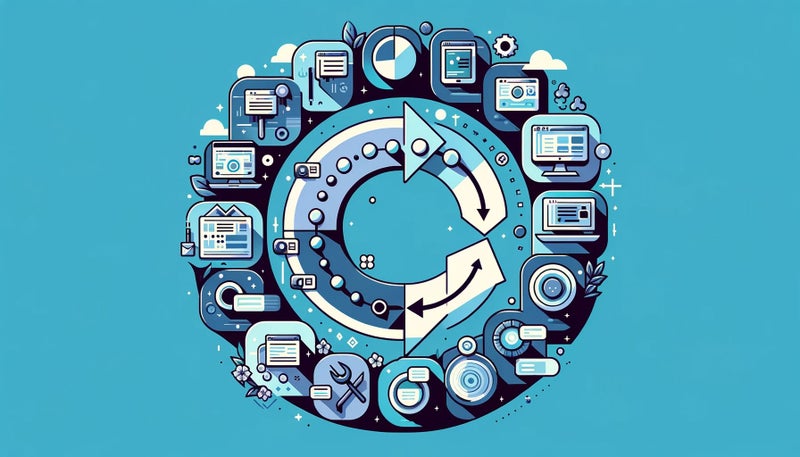Contents
- Step 2: Plan Like a Pro
- Step 3: Pilot a Feasibility Study
- Step 4: Outline The Design
- Step 5: Time to Develop Your MVP
- Step 6: Test it Like You Care
- Step 7: Deploy It Into The Market
- Step 8: Conduct Operation and Maintenance
- Step 9: Get Feedback and Improve
- Step 10: Disposal or Reiteration
Need to improve the software product development life cycle in your remote team? Navigating a new system may seem complex, but with the right approach it can take your remote team’s productivity to the next level – without disrupting existing workflows.
This easy guide breaks down the software product development life cycle into 10 crystal clear steps. It will help you manage and succeed in your projects, as you work remotely.
Think of it as your roadmap to becoming a remote software development pro!
Why is the Software Product Development Life Cycle Important for Remote Engineers?
Here's the deal: using a structured process like the SDLC is crucial for your success.
Studies show that project management tools help with both performance and satisfaction, and improper planning is one of the biggest reasons IT projects fail.
This highlights the importance of mastering the software product development life cycle, especially when coding from home.
The 10 Steps to Navigate the Software Dev Life Cycle
Step 1: Do a Requirement Analysis
Figure out what you're building:
- Work with stakeholders (clients, team members) to clearly define what the software needs to do. Really thresh it out.
- Use video calls, chat tools, and online documents to collaborate and clearly record everything.
Step 2: Plan Like a Pro
Map out your project from start to finish:
- Create a detailed plan with timelines, resources needed, and a risk management strategy.
- Decide on the project management software you will use to track progress and keep everyone on the same page.
Step 3: Pilot a Feasibility Study
Is this project even possible?
- Before diving in, assess if the project is technically, financially, and practically doable.
- This step ensures you're not building something unrealistic or impossible.
Step 4: Outline The Design
Sketch out the blueprint for your software:
- Design the overall structure (architecture) and how users will interact with it (user interface).
- Use collaborative design tools to share ideas and refine them with your remote team.
Step 5: Time to Develop Your MVP
Bring your design to life with code!
- Start writing the code based on the design specifications.
- Use agile methodologies for flexible development, testing, and delivering small parts of the software regularly.
Step 6: Test it Like You Care
Make sure your software works flawlessly:
- Test the software thoroughly to find and fix any bugs or performance issues.
- Automated testing tools can be especially helpful when working remotely.
Step 7: Deploy It Into The Market
Launch your software into the world!
- Deploy the software in the appropriate environment, like a server or the cloud.
- Cloud-based services offer scalability and easy deployment for remote teams.
Step 8: Conduct Operation and Maintenance
Keep your software running smoothly:
- Monitor how the software performs and fix any problems that arise.
- Regular updates and maintenance are essential for long-term success.
Step 9: Get Feedback and Improve
Learn from your users:
- Gather feedback from users and analyze data to see what needs improvement.
- Make changes based on this feedback in an agile way to constantly enhance the software.
Step 10: Disposal or Reiteration
Time to move on or evolve?:
- Decide whether to retire the software or build upon it further.
- Consider current market needs and technological advancements when making this decision.
The SDLC is a journey of continuous learning and adaptation, and it happens at lightning fast speeds with remote teams. Embracing the ride is key to staying competitive in the remote tech realm.
Follow these steps to navigate the software product development life cycle within your projects with ease. That way your remote team will deliver high-quality products efficiently, at scale.







